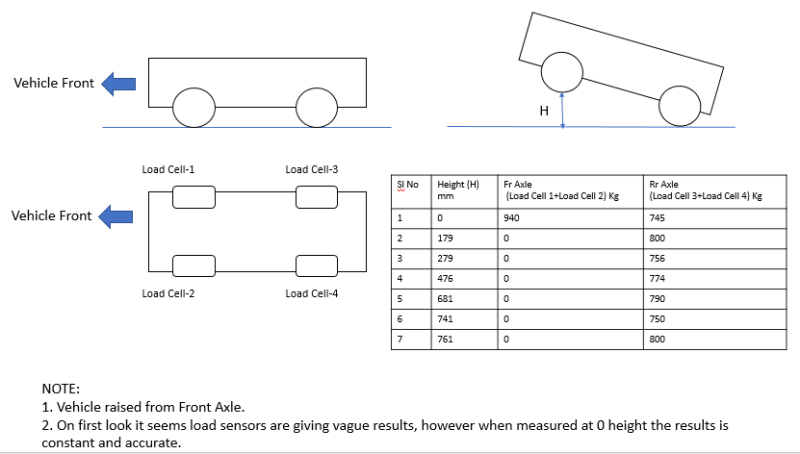ShuklaPK
Automotive
- Jul 4, 2016
- 11
Hi
This is the 1st time I am measuring CoG of a vehicle.
Method Followed:
1. All fluids filled.
2. All 4 suspension locked.
3. Load calculated at 4 wheels before raising the height from front.
4. Height of the vehicle lifted from front axle hard points (Not tires).
5. Weight calculated on the rear wheels kept on 2 Load cells.
Problem:
Load Cell values for Weight on Rear wheels is showing same when raised at 180 mm & 760 mm from front and in between these two heights weight is varying randomly.
Value on the load cell before and after raising the vehicle is same and on increasing the height upto a limit & further the weight on rear wheels is reducing.
What can be the possible reason for this?
PS: I got the load cell checked, it is working perfectly fine.
TIA
This is the 1st time I am measuring CoG of a vehicle.
Method Followed:
1. All fluids filled.
2. All 4 suspension locked.
3. Load calculated at 4 wheels before raising the height from front.
4. Height of the vehicle lifted from front axle hard points (Not tires).
5. Weight calculated on the rear wheels kept on 2 Load cells.
Problem:
Load Cell values for Weight on Rear wheels is showing same when raised at 180 mm & 760 mm from front and in between these two heights weight is varying randomly.
Value on the load cell before and after raising the vehicle is same and on increasing the height upto a limit & further the weight on rear wheels is reducing.
What can be the possible reason for this?
PS: I got the load cell checked, it is working perfectly fine.
TIA

